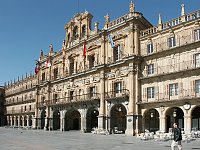
|
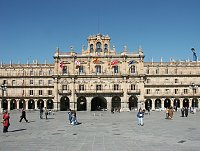
|
The northern facade with the City Hall One of the largest public squares in Spain, this plaza is the focus of city life--a meeting place and market area. Bull fighting even occurred in the plaza until the mid 1800s. It is surrounded by colonnaded loggias but each facade has a different number of arches. |
| |
|
The City HallThis town hall has two stories of balconies, violating the unity of the rest of the facades, with four stories or three upper registers. Windows are separate aedicules, crowned with pediments. The belfrey was added in the 19th century--with three bells and a clock. |
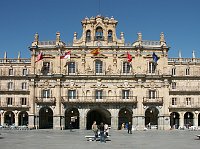
|
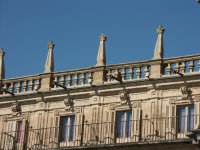
|
| |
|
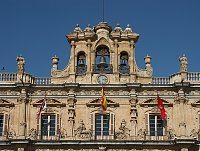
|

|
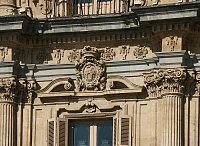
|
| |
|
Balconies crowned with pediments and with fanciful, Mannerist details |
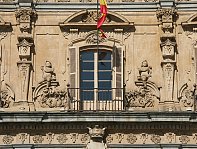
|
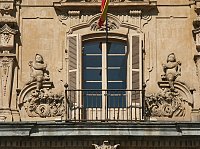
|
| |
|

|
Uneven sidesThe northern side with the City Hall has 21 arches, the south 20 arches; the east has 22 arches while the west has 25 arches. The spandrels of the arches are decorated with medallions illustrating famous men (and even women--St Teresa!) and distinguished figures in Spain's history--like kings from Alfonso IX to Carlos III, discoverers and conquerors, and Spanish intellectuals. These reliefs were executed by the sculptor Manuel de Larra Churriguera. |
| |
|
The Royal PavilionThe eastern facade, with a large semicircular arch, opens onto the Calle de Toro. Royal officials watched events on the plaza from the central balcony. Above the balcony a medallion depicts Philip V. |

|

|

|


 Click here to return to index of art historical sites.
Click here to return to index of art historical sites.
 Click here to return to index of artists and architects.
Click here to return to index of artists and architects.
 Click here to return to chronological index.
Click here to return to chronological index.
 Click here to see the home page of Bluffton University.
Click here to see the home page of Bluffton University.
